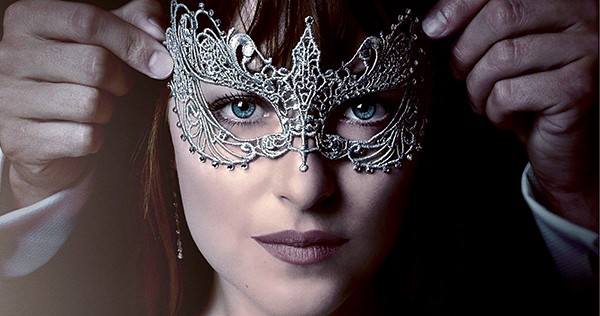How can we understand Fifty Shades Freed, the final installment of the Fifty Shades Trilogy? The usual method would be for me to rehash leading parts of the plot, rate actor performances, reference the director, and then offer some sort of comparative survey with other movies. You’d gain an understanding of the movie’s context, make an informed decision about viewing, I’d get paid, and we’d live to see another day.
I wish I could go about writing my review in the normal way. If Fifty Shades Freed were a normal movie, by which I mean a movie made by and for humans, I might be able to. But unfortunately our usual critical tools are useless here. Allow me to explain.
In the early 1970s, a batty anthropologist and cyberneticist named Gregory Bateson wrote a weird little book called Steps to an Ecology of the Mind, which you may have encountered had you spent your undergraduate years haunting underfunded departments of a liberal arts college. Bateson contemplates what it is truly like for a gorilla to communicate with another gorilla. How, he asks, might we think about this ape-to-ape exchange without corrupting it through our own perception of communication? In thinking about how animals communicate, is it possible to illuminate the limits of our own consciousness?
I thought of Bateson while I sat in the theater, looking at a “movie” called Fifty Shades Freed. This sequence of intentionally crafted visual stimuli bears coincidental aesthetic similarity to a movie. Humans say things to each other. Images of objects appear to move through space. It is rated R for Strong Sexual Content. But I believe Fifty Shades Freed is nonetheless not a movie at all, but something far more pure — a pristine document of the market economy, a kind of visual after-image created as an incidental side effect of the exchange of large sums of capital.
I don’t think I need to delve at length into the plot to tell you that the true motion of the film — what dictates the script, what encourages the change of scene — is branded content. When Christian Grey (Jamie Dornan), billionaire sadist, escorts his nubile wife, Anastasia (Dakota Johnson) toward the Learjet that will whisk them away on their honeymoon, she gawks: “You own this?”
He offers a reassuring smirk: “We own this.”
Then there are a lot of scenes where sports cars are driven, fancy butt plugs utilized, smartphones consulted, modernist houses displayed, grand pianos panned over, Aspen visited, and so forth. Dornan and Johnson are entirely flat, less emotionally developed than clydesdales in a Budweiser ad. There are some winky moments that suggest machine learning has reached a point where computers can emulate humor. But basically the point is just sports cars.

The extent to which objects star and humans are repressed in Fifty Shades Freed is incredible. It’s like Jeff Koons directed Toy Story. It’s like a live action Brave Little Toaster on mute. It’s like one of those gothic romances where a nervous housewife becomes convinced that the curtains are haunting her, only without any of the haunting, and the curtains are very expensive.
When we, humans with eyeballs, look at Fifty Shades Freed, what we see is an incidental record of money doing as money does, moving as money must move within the dictates of capitalism. We literally cannot perceive the truest form of Fifty Shades Freed because, to do so, we would have to be money ourselves. We’re as helpless at trying to decode it as if we were trying to guess what gorillas are saying to each other. Understanding is not possible for us. Per Bateson, our only recourse is to use this experience as a way to explore the outer banks of our own ability to understand.
When you see Fifty Shades Freed, and I hope you will, I think the best thing to do is to make note of where, exactly, it departs from your humanity. In what manner, exactly, do you feel crippling, debilitating alienation? In so doing, you will have a better record of what it means to be human. Hold onto that humanity. You’ll need it for whatever comes next.

